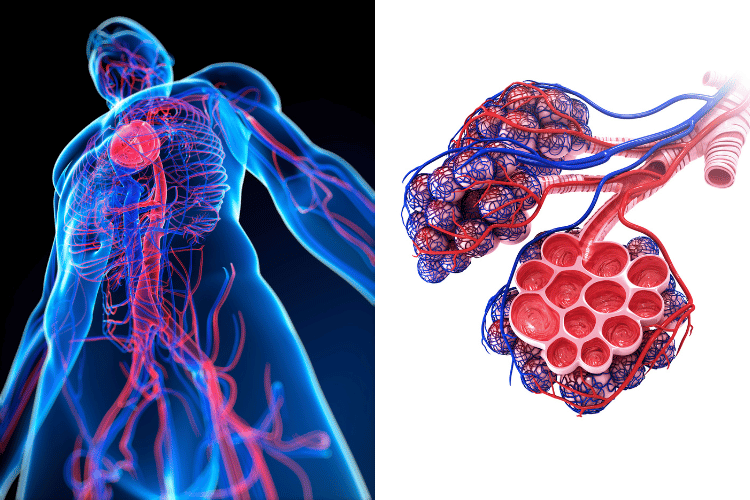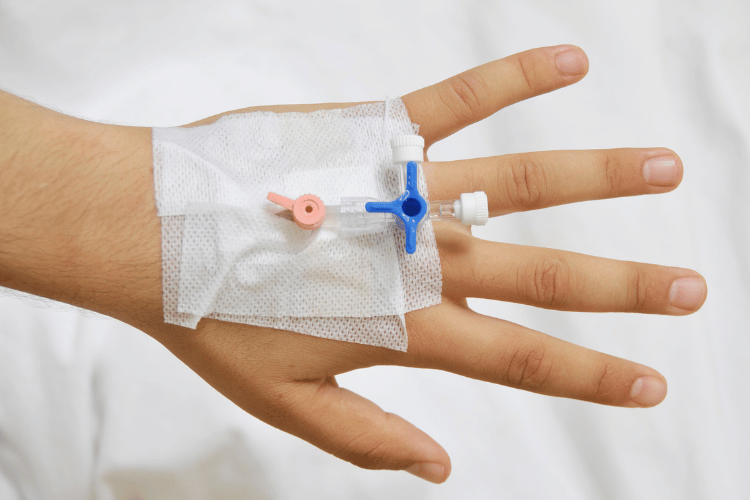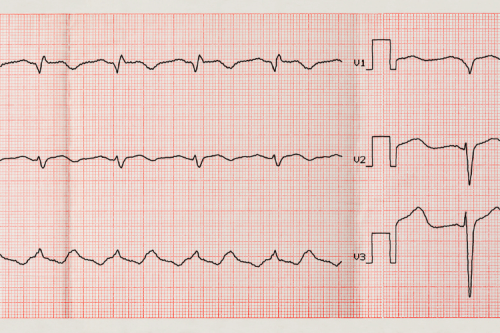
Bleeding is a typical medical emergency, but not all bleeding is the same. The human circulatory system consists of arteries and veins, each responsible for different blood flow functions, and each causing distinct types of bleeding when injured. While most people may not think about the differences between venous and arterial bleeding, understanding them is crucial for administering proper first aid, especially in life-threatening situations.
This article examines the key differences between venous and arterial bleeding, outlines how to identify each type, and provides the appropriate first aid measures to control bleeding effectively.
Understanding the Different Types of Bleeding
Bleeding, or hemorrhage, occurs when blood escapes from the circulatory system due to injury or trauma. Correctly identifying the type of bleeding is crucial for practical first aid and medical intervention, as each type presents unique characteristics and risks. This overview explores the three main types of bleeding—arterial, venous, and capillary—while highlighting the differences between arterial and venous bleeding and providing a detailed explanation of capillary bleeding.
Three Types of Bleeding
- Arterial Bleeding: This is the most severe type of bleeding, characterized by bright red blood that spurts in rhythm with the heartbeat. It occurs when an artery is damaged, and the high pressure within the arteries causes rapid blood loss, making it a medical emergency.
- Venous Bleeding: Venous bleeding involves dark red blood that flows steadily from a damaged vein. While less forceful than arterial bleeding, it can still result in significant blood loss if not controlled promptly.
- Capillary Bleeding: The least severe type, capillary bleeding, occurs when small blood vessels near the skin’s surface are damaged. It typically results in slow, oozing blood and is often seen in minor cuts or abrasions.
Difference Between Arterial and Venous Bleeding
The primary distinction between arterial and venous bleeding lies in the source and flow of blood. Arterial bleeding originates from arteries, which carry oxygen-rich blood away from the heart, resulting in bright red, pulsating blood flow. In contrast, venous bleeding originates from veins, which carry oxygen-depleted blood back to the heart, resulting in a steady, dark red flow. Arterial bleeding is more life-threatening due to its rapid blood loss and difficulty in control, whereas venous bleeding, though severe, is generally easier to manage.

Venous Bleeding
Capillary Bleeding Explained
Capillary bleeding occurs when the smallest blood vessels, the capillaries, are damaged. This type of bleeding is common in superficial injuries like scrapes or minor cuts. The blood oozes slowly and typically clots on its own, requiring minimal intervention. While capillary bleeding is rarely dangerous, proper cleaning and dressing of the wound are essential to prevent infection and promote healing.
Characteristics of Arterial Bleeding
Arterial bleeding is the most critical and life-threatening type of hemorrhage, requiring immediate medical attention. It occurs when an artery, which carries oxygen-rich blood from the heart to the body, is damaged. The high pressure within arteries results in rapid blood loss, making it essential to recognize and address this condition promptly. This overview examines the nature of blood flow in arterial bleeding, the symptoms to look out for, and the risks associated with severe bleeding.
Blood Flow in Arterial Bleeding
Arterial bleeding is distinguished by its bright red color and pulsating flow, which corresponds to the rhythm of the heartbeat. This pulsation is caused by the high pressure within arteries as they transport oxygenated blood throughout the body. The forceful spurting of blood can lead to significant blood loss in a short period, making it difficult to control without proper intervention. The rapid loss of oxygenated blood can quickly compromise the function of vital organs.
Identifying Symptoms of Arterial Bleeding
- Bright Red Blood: The oxygen-rich blood from arteries gives it a vivid red appearance.
- Pulsating Flow: Blood spurts in sync with the heartbeat, a hallmark of arterial bleeding.
- Rapid Blood Loss: The high pressure in arteries causes blood to escape quickly, leading to visible pooling or spraying.
- Shock Symptoms: Signs such as pale skin, a rapid heartbeat, and confusion may indicate the onset of hypovolemic shock resulting from severe blood loss.
Severe Bleeding and Its Risks
Uncontrolled arterial bleeding poses significant risks, including hypovolemic shock, organ failure, and death. The rapid loss of blood volume reduces oxygen delivery to tissues, impairing critical bodily functions. If left untreated, severe arterial bleeding can lead to irreversible damage within minutes. Immediate first aid, such as applying direct pressure, using a tourniquet, or seeking emergency medical care, is essential to mitigate these risks and stabilize the patient.
Characteristics of Venous Bleeding
Venous bleeding occurs when a vein, responsible for returning oxygen-depleted blood to the heart, is damaged. While less forceful than arterial bleeding, venous bleeding can still result in significant blood loss if not managed promptly. Understanding the nature of venous blood flow, recognizing its symptoms, and being aware of the potential for internal bleeding are crucial for an effective response and treatment. This overview explores these aspects in detail.
Blood Flow in Venous Bleeding
A steady, continuous flow of dark red blood characterizes venous bleeding. Unlike arterial bleeding, it does not spurt in rhythm with the heartbeat due to the lower pressure within the veins. The darker color of the blood is a result of reduced oxygen content. Although the flow is less forceful, prominent veins, such as those in the legs or neck, can still lose substantial amounts of blood quickly, especially if the vein is deeply lacerated.
Symptoms of Venous Bleeding
- Dark Red Blood: The oxygen-depleted blood gives venous bleeding its distinct, darker hue.
- Steady Flow: Blood flows continuously rather than spurting, making it easier to identify as venous in origin.
- Swelling and Bruising: In cases of internal venous bleeding, localized swelling or discoloration may occur.
- Signs of Blood Loss: Symptoms such as dizziness, fatigue, or pale skin may indicate significant blood loss, especially if the bleeding is prolonged or internal.
Internal Bleeding and Its Implications
Internal venous bleeding can occur when veins are damaged beneath the skin or within body cavities. This type of bleeding is not immediately visible, making it more challenging to diagnose. Symptoms may include swelling, pain, or a feeling of pressure in the affected area. If left untreated, internal bleeding can lead to complications such as hypovolemic shock or organ damage. Prompt medical evaluation, imaging studies, and interventions, such as surgical repair or blood transfusion, may be required to address severe cases. Recognizing the signs early is critical to preventing long-term consequences.
First Aid for Bleeding Injuries
Bleeding injuries, whether minor or severe, require prompt and appropriate first aid to prevent complications such as excessive blood loss or infection. The approach to managing bleeding depends on the type of blood vessel involved—arteries, veins, or capillaries. This guide provides detailed steps for stopping arterial, venous, and capillary bleeding to ensure effective and timely care.
How to Stop Arterial Bleeding
Arterial bleeding is a medical emergency due to its rapid blood loss and pulsating flow. Immediate action is critical:
- Apply Direct Pressure: Use a sterile dressing or clean cloth to apply firm, consistent pressure directly on the wound to slow the bleeding.
- Elevate the Limb: If possible, raise the injured area above the level of the heart to reduce blood flow.
- Use a Tourniquet: If direct pressure fails to control the bleeding, apply a tourniquet above the wound, following proper guidelines to avoid further injury.
- Seek Emergency Help: Arterial bleeding requires professional medical intervention, so call for emergency services immediately.
How to Stop Venous Bleeding
Venous bleeding, while less forceful than arterial bleeding, can still result in significant blood loss:
- Apply Steady Pressure: Place a sterile dressing over the wound and press firmly to control the flow of blood.
- Bandage the Wound: Once the bleeding slows, secure the dressing with a bandage to maintain pressure.
- Monitor for Signs of Shock: Watch for symptoms such as pale skin, rapid pulse, or dizziness, which may indicate significant blood loss.
- Elevate the Area: If feasible, elevate the injured limb to reduce blood flow to the wound.
Managing Capillary Bleeding
Capillary bleeding is the least severe and often resolves with minimal intervention:
- Clean the Wound: Rinse the area with clean water to remove debris and reduce the risk of infection.
- Apply Gentle Pressure: Use a sterile cloth or bandage to stop the bleeding, which typically oozes slowly.
- Cover the Wound: Once the bleeding stops, apply an adhesive bandage or sterile dressing to protect the area.
- Monitor for Infection: Check for redness, swelling, or discharge, which may indicate an infection requiring medical attention.
By following these first aid steps, bleeding injuries can be effectively managed, reducing the risk of complications and ensuring proper wound care.
Comparing Venous and Arterial Bleeding
Understanding the differences between venous and arterial bleeding is crucial for providing effective first aid and preventing life-threatening complications. These two types of bleeding differ in their source, appearance, and severity, which directly influence the urgency and method of treatment. This guide highlights the key distinctions, outlines first aid measures for both types, and emphasizes the importance of a swift response in managing bleeding injuries.
Venous vs Arterial: Key Differences
- Source of Bleeding: Arterial bleeding originates from arteries, which carry oxygen-rich blood away from the heart, while venous bleeding comes from veins, which return oxygen-depleted blood to the heart.
- Appearance: Arterial blood is bright red and spurts in rhythm with the heartbeat due to high pressure, whereas venous blood is darker and flows steadily without pulsation.
- Severity: Arterial bleeding is more severe and life-threatening due to rapid blood loss, while venous bleeding, though significant, is generally easier to control.
- Pressure Levels: The high pressure in arteries makes arterial bleeding harder to stop, requiring immediate and aggressive intervention.
First Aid for Arterial and Venous Bleeding
- Arterial Bleeding:
-
- Apply firm, direct pressure with a sterile dressing to slow the bleeding.
- Elevate the injured area above the heart if possible.
- Use a tourniquet as a last resort if direct pressure fails.
- Seek emergency medical help immediately.
- Venous Bleeding:
-
- Apply steady pressure with a sterile dressing to control the flow.
- Bandage the wound securely to maintain pressure.
- Elevate the affected limb to reduce blood flow to the area.
- Monitor for signs of shock and seek medical attention if necessary.
Importance of Quick Response in Bleeding Injuries
A rapid response is critical in managing both arterial and venous bleeding to prevent excessive blood loss and associated complications. Delayed treatment can lead to hypovolemic shock, organ failure, or even death in severe cases. Recognizing the type of bleeding and applying appropriate first aid measures ensures the best possible outcome while awaiting professional medical care.
Frequently Asked Questions
What is the difference between arterial and venous bleeding?
The main difference between arterial and venous bleeding lies in the type of blood involved and the severity of the bleeding. Arterial bleeding involves bright red arterial blood, which is oxygen-rich and flows away from the heart under high pressure. This type of bleeding is typically more severe and can be life-threatening. In contrast, venous bleeding occurs when blood flows back to the heart and is usually darker in color. It tends to flow steadily and is generally easier to control than arterial bleeding.
What are the three main types of bleeding?
The three main types of bleeding are arterial, venous, and capillary bleeding. Arterial bleeding is characterized by bright red blood that spurts with each heartbeat, indicating high pressure. Venous bleeding involves darker blood that flows steadily and is less severe. Capillary bleeding, the least severe form, occurs when small blood vessels are damaged and typically results in oozing blood.
How can I control the bleeding effectively?
Controlling bleeding effectively involves several steps. First, apply direct pressure on the wound to help slow the bleeding. If the bleeding doesn’t stop, elevate the injured area above the heart level if possible. For arterial bleeding, applying pressure to the artery above the wound can be crucial. If the bleeding is severe and doesn’t stop with pressure, seek medical help immediately.
What should I do if arterial bleeding occurs?
If arterial bleeding occurs, it is essential to act quickly as it is life-threatening. Apply direct pressure to the wound and, if necessary, use a clean cloth or bandage to help control the bleeding. If the bleeding doesn’t stop, apply pressure to the artery supplying the area and seek emergency medical assistance immediately.
Is venous bleeding considered less severe than arterial bleeding?
Yes, venous bleeding is generally considered less severe than arterial bleeding. While it can still be a serious concern, especially if heavy bleeding occurs, venous bleeding is typically easier to control. The blood flows steadily rather than spurting, which often allows for more effective management of the bleeding.
What color is venous blood compared to arterial blood?
Venous blood is usually darker red compared to arterial blood, which is bright red. This difference in color is due to the oxygen content; arterial blood is oxygen-rich as it leaves the heart, while venous blood has a lower oxygen level as it returns to the heart.
What are the signs of a bleeding emergency?
Signs of a bleeding emergency include the presence of heavy bleeding, blood that doesn’t stop after applying pressure, or blood that spurts from a wound. If the bleeding is life-threatening, symptoms such as confusion, rapid breathing, or loss of consciousness may also occur. In such situations, immediate medical attention is required.
How can I help slow the bleeding before help arrives?
To help slow the bleeding before medical help arrives, apply direct pressure to the wound using a clean cloth or bandage. If the bleeding is from an extremity, elevating it above the heart can also assist in slowing the flow of blood. If the pressure helps slow the bleeding but it doesn’t stop, continue to apply pressure and monitor the situation until professional help arrives.
The Bottom Line
Recognizing the difference between venous and arterial bleeding can mean the difference between life and death in an emergency. Arterial bleeding is far more urgent, requiring rapid intervention with direct pressure and possibly a tourniquet. Venous bleeding, while less immediately dangerous, still demands proper first aid to prevent complications like infection or excessive blood loss.
Whether you're a first responder, a workplace safety officer, or simply someone who wants to be prepared, understanding these bleeding types—and how to treat them—ensures you can act decisively when seconds count. Stay informed, stay equipped, and always prioritize rapid medical attention for severe bleeding cases.








 Login with Google
Login with Google Login with Facebook
Login with Facebook